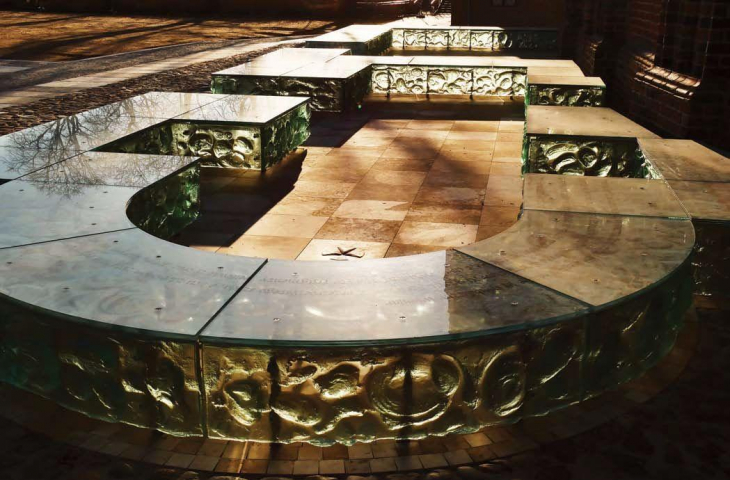This fact is worth noting. In a country flooded with questionable quality art in public space, there was an example that deserved international attention. The Polish realization made it to the top 100 nominees in the CODAwards competition for the best work of art in public space.
The CODAwards competition has been organized since 2013 by CODAwarx, an American organization that promotes and realizes artistic objects and concepts in public space (more about the organization: here). In this year's edition of the competition , an art installation realizing the importance and scale of one of the most important archaeological discoveries in Poznan was among the hundreds of nominees in the Peoples Choice category, the only one from Poland. It is about the relics of Mieszko I's palatium and the chapel of his wife Dobrawa, which were successively discovered by Poznan archaeologists in the first decades of this century. Since last year, the outline of these very important buildings has been marked with a low wall of artistic glass, designed by the J.P. Wozny Design Studio from Poznan. Tomasz and Konrad Urbanowicz of Archiglass are responsible for the details of the glass. Its relief texture is meant to resemble old stone walls.
A rendering of the walls of Mieszko I's palatium in Poznan.
photo: Mikolaj Bleja
Bird's eye view of the installation
photo: Mikolaj Bleja
The simple, legible form ( we described it in more detail in September) clearly communicates where the buildings from a thousand years ago were located, while at the same time - thanks to the glass and intimate scale - it does not compete with the nearby Church of the Blessed Virgin Mary in Summo. On the contrary: the elements illuminated in the evening draw attention to the Gothic temple surrounded by them, hitherto passed somewhat indifferently by tourists on their way to the neighboring cathedral.
instead of volume
Although some art historians in Poznan assess the glass structure as an endeavor closer to an amusement park than an archaeological reserve, the installation is received rather positively by tourists, locals and part of the architectural community. First, it is simple and legible. Second, it encourages interest in the findings of archaeologists. Third, it is an aesthetically pleasing and unpretentious work. Critics are rather hurt by the fact that - as the researchers intended - the original relics were not exposed under glass or - even - in a sizable building (there were such designs).
view of the installation from the north side
photo: Jakub Glaz
Such ideas, however, ended up in a drawer. Some interfered too strongly and inappropriately with the church's surroundings. Moreover, the construction of an underground chamber could weaken the already unstable walls of the church. Finally, meetings of the city's team for Ostrow Tumski pointed out the low functionality and attractiveness of displaying the relics under glass. An overturned wall would be hardly legible, and besides, such installations perform poorly in an open-air setting. Which, by the way, was confirmed this spring at Poznan's Kolegiac Square. The effects of the excavations there were placed under glass, and - unfortunately - both the sun and rain make it difficult to view the exhibits.
the art of motivation
It is all the more gratifying that the strengths of the Poznan realization have been recognized in the international CODAwards competition (list of one hundred nominees: here). In Polish public space, a quality art installation or , even more so , a monument, are rare. And even if it's worth being skeptical about competitions in the form of plebiscites, especially those in which the decision is up to online voters, the recognition of the Poznań realization certainly has advantages. Regardless of the final position in the competition (the online voting ended yesterday, the results - in August), the presence of the work of J.P. Wozny's office in international competitions will become a motivation for other local governments or developers to bet on objects that exceed current standards.

































